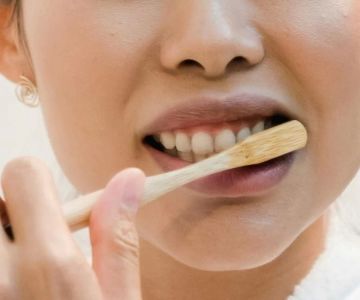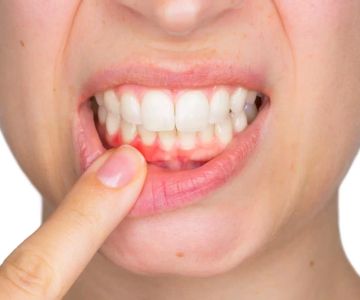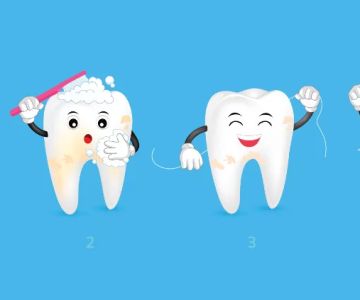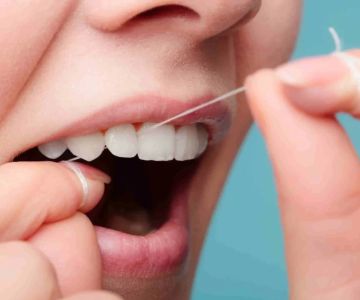How to Prevent Gingivitis with Healthy Oral Care Habits
- 1. Understanding Gingivitis and Its Causes
- 2. The Importance of Good Oral Hygiene
- 3. Top Oral Care Habits to Prevent Gingivitis
- 4. Healthy Diet and Lifestyle for Better Oral Health
- 5. When to See a Dentist for Gingivitis Treatment
- 6. Conclusion and How to Maintain Healthy Oral Habits
1. Understanding Gingivitis and Its Causes
Gingivitis is a common but preventable gum disease that affects millions of people globally. It is characterized by irritation, redness, and swelling of the gums, which can lead to more serious oral health problems if left untreated. The primary cause of gingivitis is the buildup of plaque on the teeth and gums. Plaque, a sticky film of bacteria, forms when food particles mix with saliva. If not removed by regular brushing and flossing, plaque can irritate the gums, leading to inflammation.
Some risk factors for gingivitis include poor oral hygiene, smoking, poor diet, and even certain medical conditions such as diabetes. Understanding the causes and symptoms of gingivitis is the first step in preventing it.
2. The Importance of Good Oral Hygiene
Good oral hygiene is the foundation of healthy gums and teeth. Brushing your teeth twice a day and flossing at least once a day can help remove food particles and plaque that cause gingivitis. It’s essential to use the right toothbrush and toothpaste for your oral needs, along with mouthwash to kill harmful bacteria.
Studies have shown that brushing for at least two minutes ensures all surfaces of the teeth are properly cleaned. Additionally, choosing a soft-bristled toothbrush and fluoride toothpaste can help protect your gums from irritation and cavities.
Regular dental check-ups are also crucial in catching early signs of gingivitis and preventing further complications. Your dentist can help you maintain optimal oral hygiene and provide personalized advice on how to care for your teeth and gums.
3. Top Oral Care Habits to Prevent Gingivitis
To prevent gingivitis, it’s important to adopt good oral care habits consistently. Here are some of the top habits that can help you maintain healthy gums:
- Brushing Properly: Use a soft-bristled toothbrush and fluoride toothpaste. Brush your teeth at least twice a day, and ensure you’re cleaning all surfaces, including the gums, to remove plaque effectively.
- Flossing Daily: Flossing is crucial to remove food particles and plaque between teeth and along the gum line, areas that your toothbrush might miss.
- Using Mouthwash: Antiseptic mouthwash helps to kill bacteria in your mouth, reducing plaque buildup and preventing gingivitis.
- Changing Your Toothbrush: Regularly replace your toothbrush every three to four months or sooner if the bristles are frayed.
Incorporating these habits into your daily routine will help ensure that plaque doesn’t build up and lead to gum disease.
4. Healthy Diet and Lifestyle for Better Oral Health
A healthy diet plays an essential role in maintaining your oral health. Eating foods rich in vitamins and minerals, such as fruits and vegetables, can support strong teeth and gums. Additionally, avoiding sugary snacks and drinks can help prevent plaque buildup and gum inflammation.
Another lifestyle factor to consider is quitting smoking. Smoking is a significant risk factor for gingivitis and other periodontal diseases, as it can interfere with blood flow to the gums, making it harder for your body to fight off infections.
Staying hydrated is also important, as it helps promote saliva production, which naturally cleanses the mouth and neutralizes harmful acids produced by bacteria.
5. When to See a Dentist for Gingivitis Treatment
If you notice any signs of gingivitis, such as swollen, bleeding gums, bad breath, or gum sensitivity, it’s important to visit your dentist as soon as possible. Early treatment can prevent the progression of gingivitis to more serious gum disease, such as periodontitis, which can lead to tooth loss.
Your dentist can perform a professional cleaning to remove plaque and tartar buildup and may recommend specific treatments to improve your gum health. Regular dental checkups every six months are essential to ensure that your gums and teeth remain healthy over time.
6. Conclusion and How to Maintain Healthy Oral Habits
Preventing gingivitis requires consistent oral care habits and a healthy lifestyle. By brushing and flossing regularly, using mouthwash, eating a balanced diet, and visiting your dentist regularly, you can maintain healthy gums and teeth for a lifetime.
If you’re looking to enhance your oral care routine, consider investing in high-quality toothbrushes, toothpaste, and mouthwash. Products designed to fight plaque buildup and protect your gums can make a significant difference in your oral health.
Learn more about the best products for preventing gingivitis and achieving optimal oral health today. Click here to explore our range of dental care products and take the first step toward healthier gums and teeth!







 Westgate Dental Arts
Westgate Dental Arts Coventry Family Dental
Coventry Family Dental Familia Dental
Familia Dental Dr. Daniel S. Fife, DDS
Dr. Daniel S. Fife, DDS Dentistry At Suburban Square: Michael I. Wollock, DMD
Dentistry At Suburban Square: Michael I. Wollock, DMD Comfort Care Dental
Comfort Care Dental The Importance of Oral Health Education During Pregnancy for a Healthy Pregnancy
The Importance of Oral Health Education During Pregnancy for a Healthy Pregnancy Why Skipping Dental Checkups Can Lead to Bigger Oral Health Problems
Why Skipping Dental Checkups Can Lead to Bigger Oral Health Problems Advantages of Porcelain Dental Restorations
Advantages of Porcelain Dental Restorations Best Tips for Brushing Your Teeth Properly for Healthy Gums: Essential Techniques for Oral Health
Best Tips for Brushing Your Teeth Properly for Healthy Gums: Essential Techniques for Oral Health How Can Diabetes Cause Tooth and Gum Problems? Preventing and Managing Oral Health Issues
How Can Diabetes Cause Tooth and Gum Problems? Preventing and Managing Oral Health Issues Healthy Habits for Promoting Good Oral Health and Hygiene: Tips for a Healthy Smile
Healthy Habits for Promoting Good Oral Health and Hygiene: Tips for a Healthy Smile